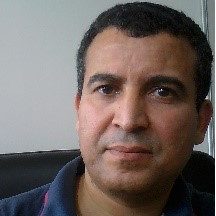Applications of Multisensory Fusion for Automation and Control of Robotic Systems
A special issue of Sensors (ISSN 1424-8220). This special issue belongs to the section "Sensors and Robotics".
Deadline for manuscript submissions: closed (15 March 2023) | Viewed by 39628
Special Issue Editors
Interests: multi-sensor fusion; control systems; robotics and mechatronic systems; autonomous vehicles; UAVs; aerial manipulation; humanoids
Interests: multi-sensor fusion; systems modeling and analysis; control systems; robotics and mechatronic systems; autonomous vehicle; UAV's; aerial manipulation
Special Issue Information
Dear Colleagues,
For decades, the tasks assigned to robots have constantly evolved to give birth to today's robots, that which participate more and more in the daily life of humans. The robots of yesteryear were very heavy manipulators, static and confined in factories to perform repetitive tasks in often familiar and static environments. Today's robots are increasingly mobile, independent, intelligent, and autonomous to provide more services that were, not so long ago, pure science fiction. The continuous improvement of their autonomy and efficiency has enabled their implementation in many fields such as transportation, medicine, construction, agriculture, and human services. Advances in sensor technologies and their integration into intelligent devices and systems have accelerated the increase in the autonomy and efficiency of robotic systems, enabling them to perform tasks that are more complex.
In this Special Issue, we invite original review and research papers addressing multi-sensor integration and fusion for the control of robotic systems such as UAVs, humanoid robots, collaborative robots, robotic manipulators, aerial manipulators, automated vehicles, etc.
Topics of interest include, but are not limited to, the following:
- Advanced robotics
- Advances in robotic applications
- Advances in perception and control
- Multi-sensor system design
- Integration of sensors in control systems
- Position and localization systems
- Sensor technique in robotic applications
- Sensor-based robot navigation, task, and motion planning
- Sensor integration and fusion for positioning and navigation
- Flight control and surveillance systems
- Guidance control systems
- Intelligent transportation systems
- Locomotion and manipulation in robot systems
Prof. Dr. Abdelaziz Benallegue
Dr. A. El Hadri
Guest Editors
Manuscript Submission Information
Manuscripts should be submitted online at www.mdpi.com by registering and logging in to this website. Once you are registered, click here to go to the submission form. Manuscripts can be submitted until the deadline. All submissions that pass pre-check are peer-reviewed. Accepted papers will be published continuously in the journal (as soon as accepted) and will be listed together on the special issue website. Research articles, review articles as well as short communications are invited. For planned papers, a title and short abstract (about 100 words) can be sent to the Editorial Office for announcement on this website.
Submitted manuscripts should not have been published previously, nor be under consideration for publication elsewhere (except conference proceedings papers). All manuscripts are thoroughly refereed through a single-blind peer-review process. A guide for authors and other relevant information for submission of manuscripts is available on the Instructions for Authors page. Sensors is an international peer-reviewed open access semimonthly journal published by MDPI.
Please visit the Instructions for Authors page before submitting a manuscript. The Article Processing Charge (APC) for publication in this open access journal is 2600 CHF (Swiss Francs). Submitted papers should be well formatted and use good English. Authors may use MDPI's English editing service prior to publication or during author revisions.
Keywords
- Robot sensing and data fusion
- Perception systems
- Robust control systems
- Nonlinear control systems
- Smart sensors
- Fusion techniques
- Multisensory integration and fusion
- Vision-based sensing







